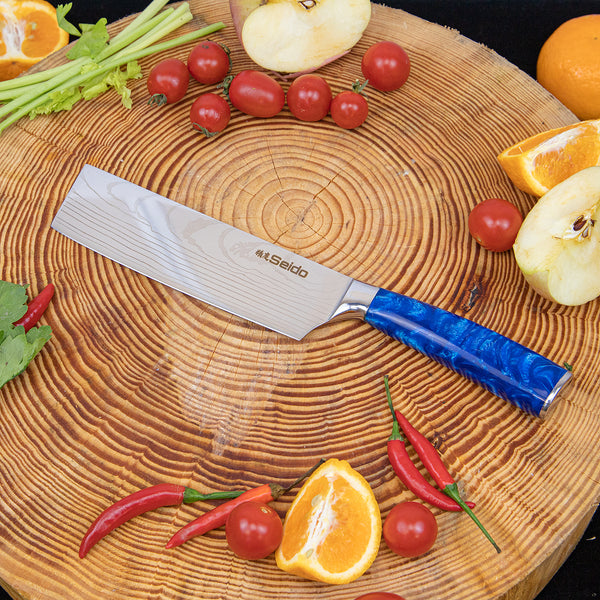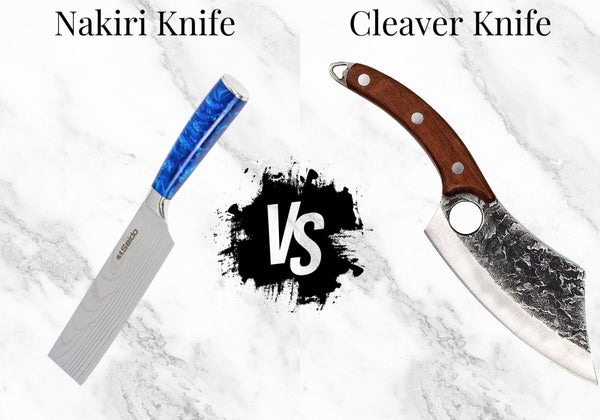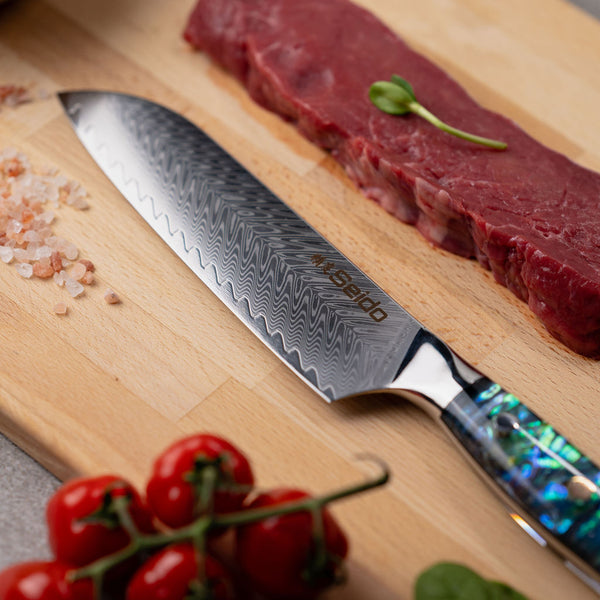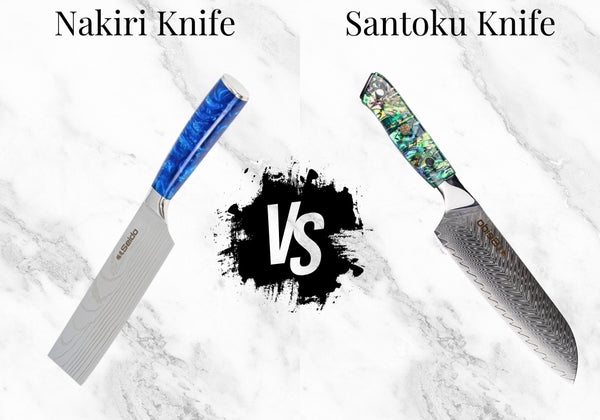Mastering the art of cooking begins with identifying the right tools. For culinary explorers, this process is woven with a respect for tradition and an eye for innovation. Two options from Seido Knives have consistently graced the cutting boards of professionals and home chefs alike: the nakiri and the santoku. Both exemplify Japanese precision and have earned their place in Western kitchens. Understanding the nuances between these two knives will help you find your culinary companion and elevate your cooking experience.
Explore Our Collection of Nakiri and Santoku Knives!
WHAT IS A NAKIRI KNIFE?
Our Japanese nakiri knife is a double-bevel vegetable knife designed for intricate and delicate cuts. It looks similar to a cleaver. Its straight blade has minimal curvature, allowing for precise vertical cuts and thin slices. The pointed tip is perfect for detailed work, such as creating intricate garnishes or removing blemishes from produce.
HOW TO USE A NAKIRI
Before wielding a nakiri knife, ensure you have the right tool for the job. Our Tengoku Chef Knife Set, 10-Piece has a high-quality nakiri knife with blade made with high-carbon stainless steel. Our Japanese Master Chef Knife Set, 8-Piece also includes a nakiri knife.
To use, hold your nakiri knife with a firm yet relaxed grip. Position your index finger and thumb on opposite sides of the blade’s bolster or spine. This provides stability and control during cutting motions. Maintain a balanced stance with your feet shoulder-width apart, keeping your body aligned with the cutting surface for optimal leverage and precision.

Experience this Nakiri Knife from Our Tengoku Chef Knife Set!
With its unique profile, the nakiri knife excels at fine mincing, brunoise, and other intricate vegetable preparations. Its wide, flat blade ensures that a significant portion of the vegetable makes contact with the cutting board, simplifying chopping and scooping. The straight edge also helps create cuts with a uniform thickness, which is essential for perfecting garnishes and showcasing ingredients in their harmonious entirety.
NAKIRI VS. CLEAVER
Although both a nakiri and a cleaver are versatile tools that excel at slicing, dicing, and chopping vegetables, there are some fundamental differences between them. The cleaver’s broad blade and heft make it suitable for breaking through bones or harder vegetables like squash. In contrast, the nakiri's thinner blade is designed for more delicate tasks, such as creating precise cuts and mincing herbs.

WHAT IS A SANTOKU KNIFE?
Santoku translates as three virtues or three uses, alluding to its versatility in cutting vegetables, meats, and fish with deftness. Much like the nakiri, the santoku hails from Japan. It is a hybrid blade characterized by a relatively short length and a spine that curves down to meet the sharply pointed tip.
ADVANTAGES OF A SANTOKU KNIFE
The santoku knife is ideal for preparing onions, peppers, carrots, or herbs. Its straight cutting edge and pronounced belly allow for effortless slicing motions. At the same time, its rounded tip provides stability and control during intricate cutting tasks.
A santoku knife is also perfect for mincing herbs, garlic, shallots, and other aromatics. Its finely honed blade and ergonomic design enable precise, controlled movements, allowing you to achieve finely chopped ingredients without bruising or crushing them.
Additionally, the santoku knife excels in slicing boneless meats and fish with precision and finesse. Its thin, sharp blade glides effortlessly through tender cuts of poultry, beef, pork, and fish, producing clean, even slices without tearing or shredding the meat.

NAKIRI VS. SANTOKU KNIFE
Santoku vs. nakiri has always been a hot topic among chefs and home cooks alike. While both knives excel in vegetable preparation, the santoku knife's versatility extends to other tasks as well.

The nakiri knife uses a flat blade and specializes in push-cutting vegetables. In contrast, the santoku knife's curved edge allows for rocking motions, making it suitable for both chopping and slicing. Either knife, when paired with the Kiritsuke Damascus Chef Knife, gives you great versatility in the kitchen. You might also want a paring knife to complete your set. Check out our article about what is a paring knife used for to understand why.
BOTTOM LINE: CHOOSING THE PERFECT KNIFE
Selecting the perfect knife for your culinary adventures is a challenging act. However, both the santoku and nakiri knife are equally adept at preparing veggies. If you are looking for a knife that can handle other tasks like slicing fish or meats, the santoku knife is the better choice. At the end of the day, it’s better to have them both in your collection, as they bring unique features to the table.



